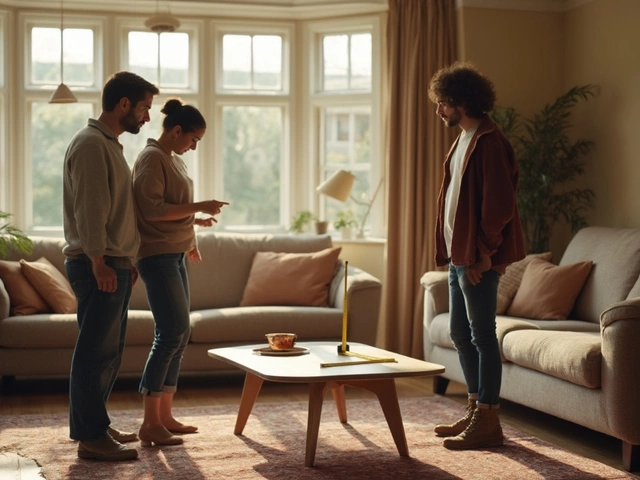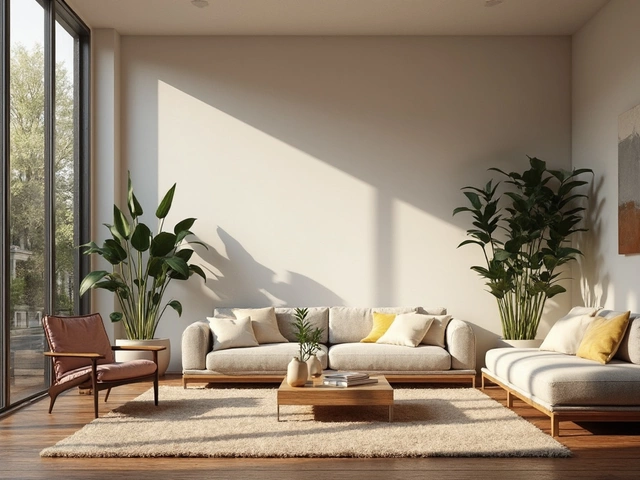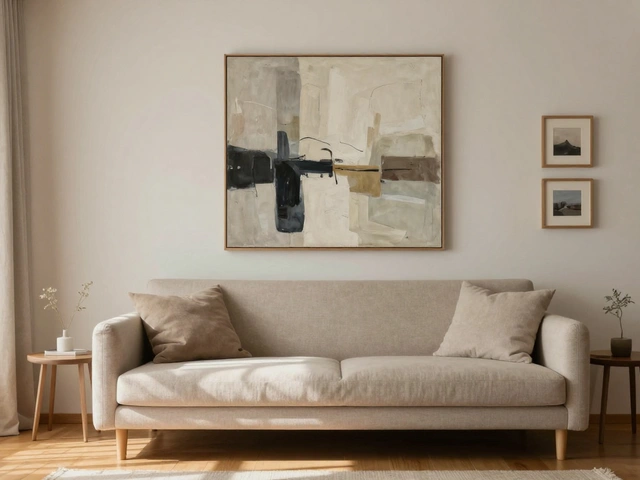Curtain Color vs Couch Shade: Light or Dark - Which Works Best?
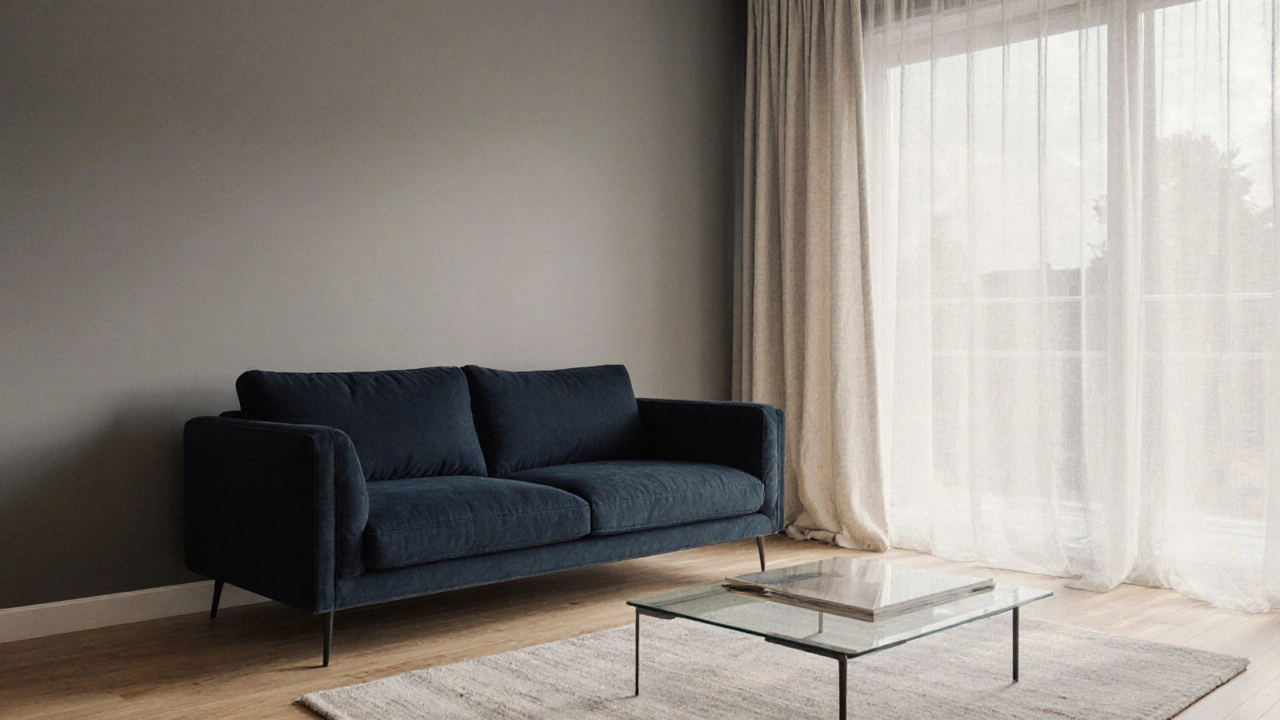
Ever walked into a living room and wondered why the space feels off‑balance? More often than not, the clash (or harmony) between the curtain color and the couch shade is the hidden culprit.
Why the Curtain‑to‑Couch Relationship Matters
When you line a window with fabric, you’re not just blocking light - you’re adding a visual anchor that competes with the main seating piece. The couch draws the eye first; the curtains either support that focus or pull it away. Understanding this subtle power dynamic helps you avoid a room that looks chaotic or overly flat.
Key Elements That Influence the Decision
Curtains are window treatments made from various fabrics, designed to control light, privacy, and style come in countless hues, textures, and lengths. Their role in a room is determined by five core factors:
- Color palette - the overall range of hues in the room.
- Fabric texture - how the material feels and catches light.
- Natural light - the amount of daylight that reaches the windows.
- Room proportion - the size relationship between windows, walls, and furniture.
- Accent colors - secondary tones that tie elements together.
Each factor interacts with the couch, which we’ll define next.
Couch is a large upholstered seating piece that anchors the living room and sets the primary color tone usually serves as the room’s focal point. Its upholstery, legs, and cushions dictate the base mood, making it the benchmark for any surrounding textile.
Light Curtains vs. Dark Curtains: The Visual Impact
| Aspect | Light Curtains | Dark Curtains |
|---|---|---|
| Room size perception | Creates an airy, spacious feel; ideal for small rooms. | Adds depth; works well in larger spaces where you want intimacy. |
| Contrast with couch | Blends or subtly highlights a dark couch. | Stands out against a light‑toned sofa, drawing attention. |
| Light control | Less blocking; lets more natural light in. | Better at dimming glare and providing privacy. |
| Style vibe | Casual, coastal, Scandinavian. | Moody, modern, traditional depending on fabric. |
Both options have merit, but the right pick hinges on the couch’s shade and the room’s purpose.
When Light Curtains Shine
If your couch is a deep navy, charcoal, or rich brown, lighter curtains (off‑white, soft gray, pastel) can soften the visual weight. The contrast is enough to create interest without overwhelming the eye. This pairing works especially well when:
- You want maximum daylight in a north‑facing room that struggles with light.
- The ceiling is low; lighter fabrics visually lift the ceiling.
- You’re aiming for a breezy, coastal ambience.
Tip: Choose a fabric with a subtle sheen (linen‑blend, voile) to reflect the daylight and keep the space lively.
When Dark Curtains Take Center Stage
Conversely, a light‑colored couch-cream, beige, or pastel gray-pairs beautifully with deeper curtains (emerald, navy, walnut). The dark drapes create a backdrop that emphasizes the softness of the sofa. Opt for dark curtains when:
- The room gets abundant sunlight and you need glare control.
- You want a cinematic feel for movie nights.
- The architecture features high ceilings; dark panels make them feel cozier.
Tip: Add a thin liner underneath to keep the curtains from looking too heavy while still preserving the rich hue.
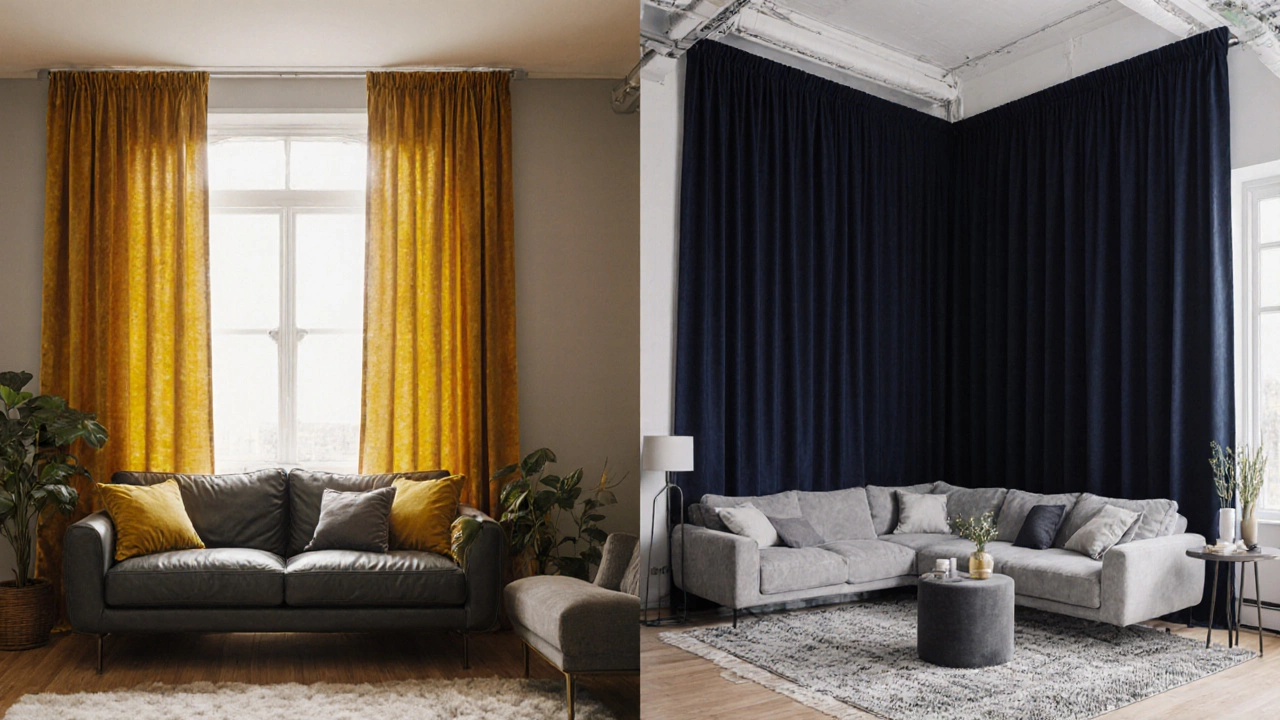
Balancing Color Palette and Accent Hues
The Color Palette is the collection of primary and secondary colors used throughout a space should flow from the couch to the curtains, then to rugs, pillows, and wall art. A useful rule of thumb: pick one dominant color (the couch) and choose a secondary shade for curtains that sits 2‑3 steps away on the color wheel.
For example, a teal couch can be complemented by mustard‑yellow curtains (analogous) or a muted gray (complementary). If you’re daring, a bold navy couch with burnt‑orange curtains creates a high‑impact contrast that works when paired with neutral walls.
Considering Fabric Texture and Light
Texture can either mute or amplify color intensity. Heavy velvets absorb light, deepening dark hues, while sheer linens let colors appear lighter. When pairing with a couch:
- Heavy texture + dark couch: Choose a lighter fabric to avoid a blackout effect.
- Sheer texture + light couch: Dark curtains can add depth without sacrificing brightness.
Don’t forget Lighting is the quality and direction of natural or artificial light influencing color perception. In rooms with strong east‑west exposure, darker curtains protect furniture from UV fade while preserving a cozy vibe.
Room Proportion and How It Guides Your Choice
The Room Proportion is the relationship between the size of the windows, walls, and furniture within a space matters. If the windows dominate a small room, light curtains prevent the space from feeling cramped. In a large, open‑plan area, dark curtains can anchor the room and prevent a “floating” feeling.
Common Mistakes and How to Fix Them
- Matching exact shades. A curtain that mirrors the couch exactly can make the wall disappear, leaving the room flat. Introduce a contrasting accent or a patterned fabric.
- Ignoring undertones. A gray couch with cool‑blue curtains may clash with warm wooden floors. Choose curtains with a complementary undertone.
- Over‑dimming. Dark curtains in a windowless room create a cave. Pair with a light‑colored rug or reflective décor to bounce light around.
- Forgetting maintenance. Deep colors show dust more; lighter fabrics fade quicker. Pick fabrics that suit your lifestyle.
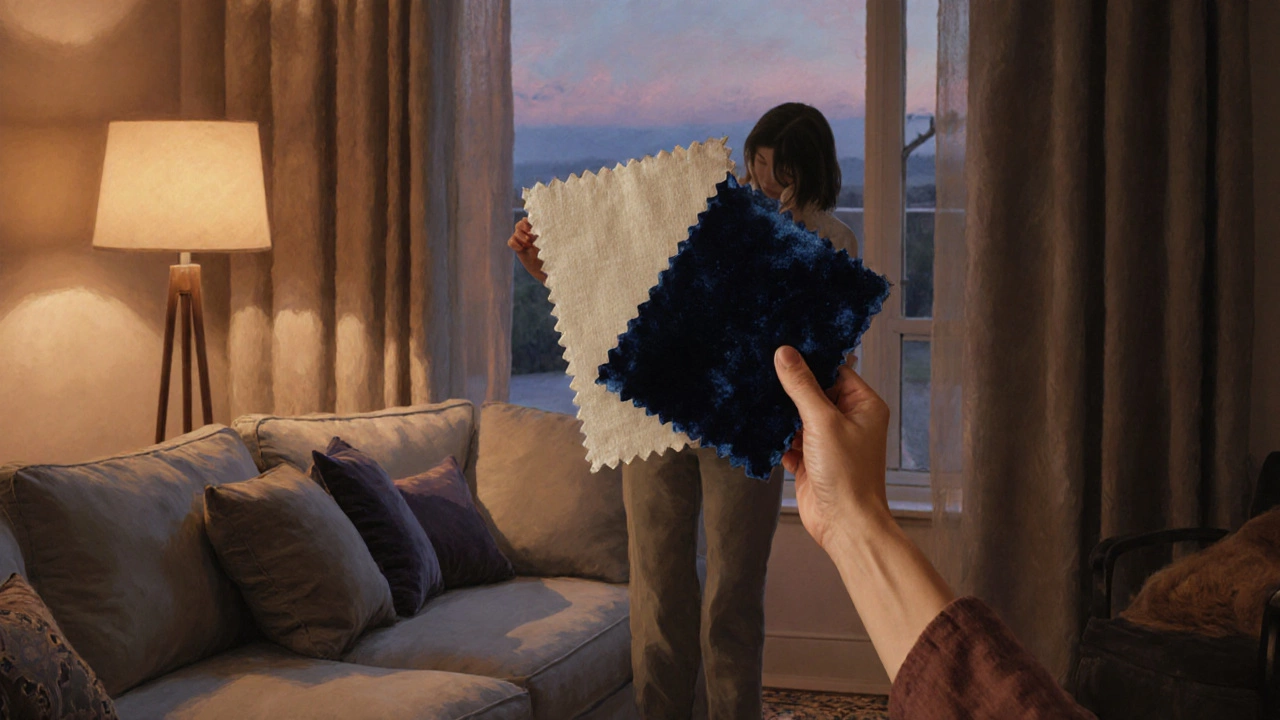
Step‑by‑Step Guide to Pick the Perfect Curtain Shade
- Identify your couch’s primary color and note its undertone (warm or cool).
- Assess natural light - bright, moderate, or low.
- Choose a contrast level: low (light with dark couch), medium (analogous hues), or high (complementary colors).
- Select fabric texture based on privacy needs and style - linen for breezy, velvet for luxe.
- Test swatches against the couch in the room’s lighting at different times of day.
- Finalize with an accent (throw pillow, rug) that pulls both colors together.
Real‑World Examples to Inspire Your Decision
Case 1 - Coastal Chic: A white slipcovered sofa paired with pale‑blue linen curtains. Light curtains keep the room bright, while the soft blue adds a seaside vibe.
Case 2 - Urban Modern: Charcoal leather couch with mustard‑yellow heavyweight curtains in a loft. The bold contrast draws the eye, and the heavy fabric blocks street light for movie nights.
Case 3 - Minimalist Zen: Light gray sectional with deep navy blackout curtains. The dark curtains provide privacy in a high‑rise apartment while the gray couch maintains a serene palette.
Quick Checklist Before You Buy
- Does the curtain shade complement or contrast the couch in a way that matches your desired mood?
- Is the fabric suitable for the room’s light exposure?
- Will the curtain’s weight affect window hardware?
- Have you coordinated an accent piece to tie the two colors together?
Frequently Asked Questions
Can I mix patterns on curtains and couch?
Yes, just keep the color family consistent. If your couch has a subtle geometric print, choose curtains with a larger scale pattern in the same base colors to avoid visual chaos.
Do I need a liner for dark curtains?
A liner helps block light and adds insulation. It also protects the fabric from UV damage, which is especially useful for deep colors that fade faster.
What if my couch is multicolored?
Pick the dominant hue of the sofa and let the curtains echo one of its secondary tones. Alternatively, go neutral (gray, taupe) to let the couch’s pattern shine.
Is it okay to have the same exact color on both couch and curtains?
It can work in monochrome designs, but add texture or a small accent (like a patterned rug) to break the flatness. Otherwise the room may feel too uniform.
How do I choose the right fabric for a high‑traffic family room?
Durable, easy‑to‑clean fabrics like cotton‑poly blends or tightly woven linen work well. Pair them with darker shades to hide stains between washes.
Next Steps: Bring Your Vision to Life
Grab a few fabric swatches, place them next to your couch, and observe them at sunrise, noon, and sunset. Notice how the colors shift. Once you’ve nailed the right shade, measure your windows, order the curtains (don’t forget a liner if you need extra blackout), and add a coordinating pillow or rug to seal the look. In just a weekend, you’ll transform a bland living room into a space that feels intentional and balanced.
